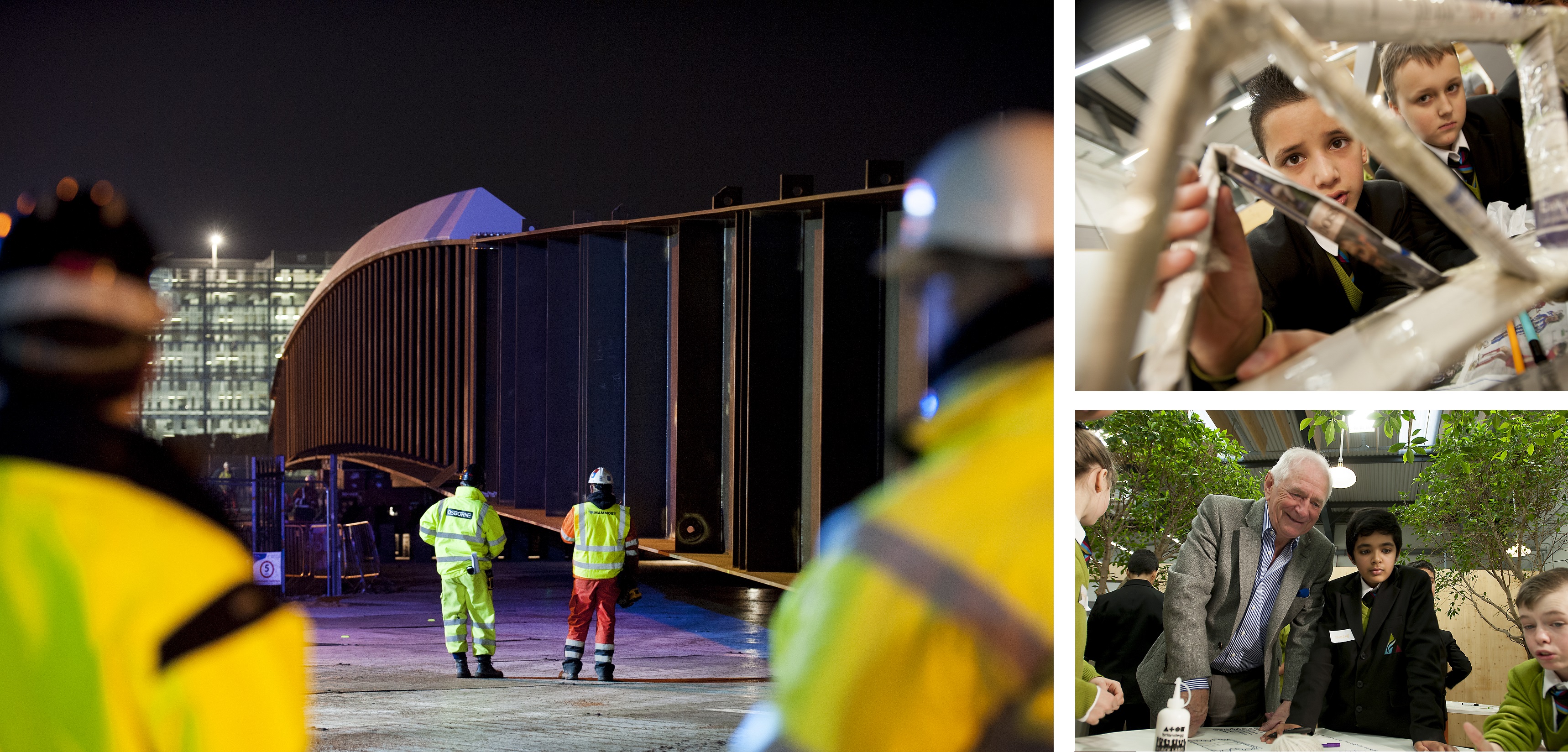Building lasting bridges with the community – Osborne
Osborne – one of the leading family-owned building construction businesses in the UK – has spoken of its successful £10m Leigh Road Bridge project.
Its construction of a replacement bridge over a mainline railway, and creation of a new road layout, was praised for exceptionally considerate construction. The Leigh Road Bridge project was officially opened in September 2015 and is the largest infrastructure investment on the Slough Trading Estate in recent years.
The new Leigh Road Bridge is part of the on-going work to attract new business to the area, whilst also improving the experience for existing customers. The new road bridge enables two-way traffic over the railway line and will allow it to flow more freely around the estate.
It is designed to improve the connectivity between the northern and southern business hubs, bypassing the historic listed Brunel brick arch bridge crossing the Great Western Railway (GWR).
One of the biggest challenges for the project team was the overnight installation of the 1,000 tonne steel bridge across the track, which was made safe by Network Rail in the early hours of Sunday, 8th February 2015. As well as the size and scale of the bridge, within the confines of a built-up area.
It was the culmination of a highly skilled and experienced team from Osborne spending 18 months meticulously designing the 95.9m bridge and its subsequent installation.
The structure is made up of three sections – the 27 metres nose to guide the bridge over the gap, the actual bridge which is 52 metres long and the 16-metre tail which acts as a cantilever. The nose and the tail are removed once the bridge is fully settled on the concrete abutments on the embankments.
Explaining the dramatic race against the clock to install the bridge over this busy part of the railway, Jon Millar said:
“The bridge was manoeuvred to the southern embankment and at 2am the bridge was moved at a speed of just 0.03mph across the track. At six feet away from touchdown, an engineer visually guided the nose onto the concrete abutment on the northern side of the track.”
After the bridge’s installation in February, and before the grand opening in September, the deck, tarmac and footpaths on the bridge and new roads were being constructed.
Here are some examples of best practice initiatives carried out by Osborne:
- All locations were clearly delineated, maintained and visible, through netted Heras fencing. Daily boundary checks and litter sweeps were carried out to ensure the appearance of the site remained organised and tidy.
- The positive appearance of the workforce was a priority with logo-branded PPE in good order and branding carried throughout on mugs, work wear and all information.
- A planned viewing gallery during bridge installation was in place, plus a time-lapse camera installed to capture the entire operation.
- Good news information was captured on the website, to keep interested members of the community up to date with progress and important stages of the project.
- ‘Extensive interaction’ was carried out with the local school – Lynch Hill Enterprise Academy. This included engaging 70 pupils with a site visit to see the size and scale of the Leigh Road Bridge, before visiting Slough Aspire Centre where they learnt how structures, like roads and bridges are designed and constructed.
- Children were encouraged to consider a career in engineering by entering a bridge engineering competition. They were challenged to design and create their own structure. Experts from Osborne judged the entries and the winning teams received book tokens.
- The local school children were given the opportunity to spend the day with industry professionals to understand how Science, Technology, Engineering and Mathematics (STEM) impacts on everyday life. This event was hosted by TV presenter and mathematics expert, Johnny Ball.
- The pupil engagement also included coverage on the BBC’s The One Show, plus press coverage and Aspire in Careers in Engineering posters highlighting this initiative.
- CO2 reduction policy was in place with delivery mileage recorded and the reuse of crushed concrete on site.
- Excellent environmental information board was displayed.
- Any surplus top soil was re-used on other sites and fly tipping clearance was carried out from nearby areas.
- The team worked closely with Network Rail and consulted independent professionals who continuously reviewed the plans to ensure all eventualities were considered, monitored and accounted for.
- Leading edge engineering techniques and machinery were used throughout the project from planning to implementation, to ensure high safety levels were maintained.
- A specialist type of heavy plant transporter was required, known as a self-propelled modular transporter (SPMT) to move the bridge, rather than a traditional crane. It can rotate around its centre to make a 360 degree turn and can move sideways – ideal for moving the bridge into position and avoiding surrounding buildings en route.
- A stop-think campaign and ‘changing beliefs’ culture was imparted across the whole team. Good safety signage was in place, including life saving rules and risks identified.
- International workers were supported with literacy or numeracy tuition and private space made available for any religious observances.
A response to the community interaction at Lynch Hill Enterprise Academy:
Praising this invaluable initiative, Head Teacher of Lynch Hill Enterprise Academy, Gillian Coffey said:
“This is a great opportunity for our students to develop practical science and engineering skills, while learning more about careers in civil engineering.”
A quote from the community event at Slough Aspire:
TV Presenter Johnny Ball commented on the benefits:
“Projects that bring theory to life are the best methods for children to understand the role STEM plays in our world. Today’s visit and competition at Slough Aspire has given the students a fun and insightful experience – one which I hope will spur their interest in a future involving STEM subjects.”



